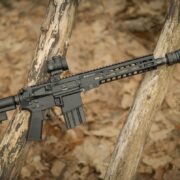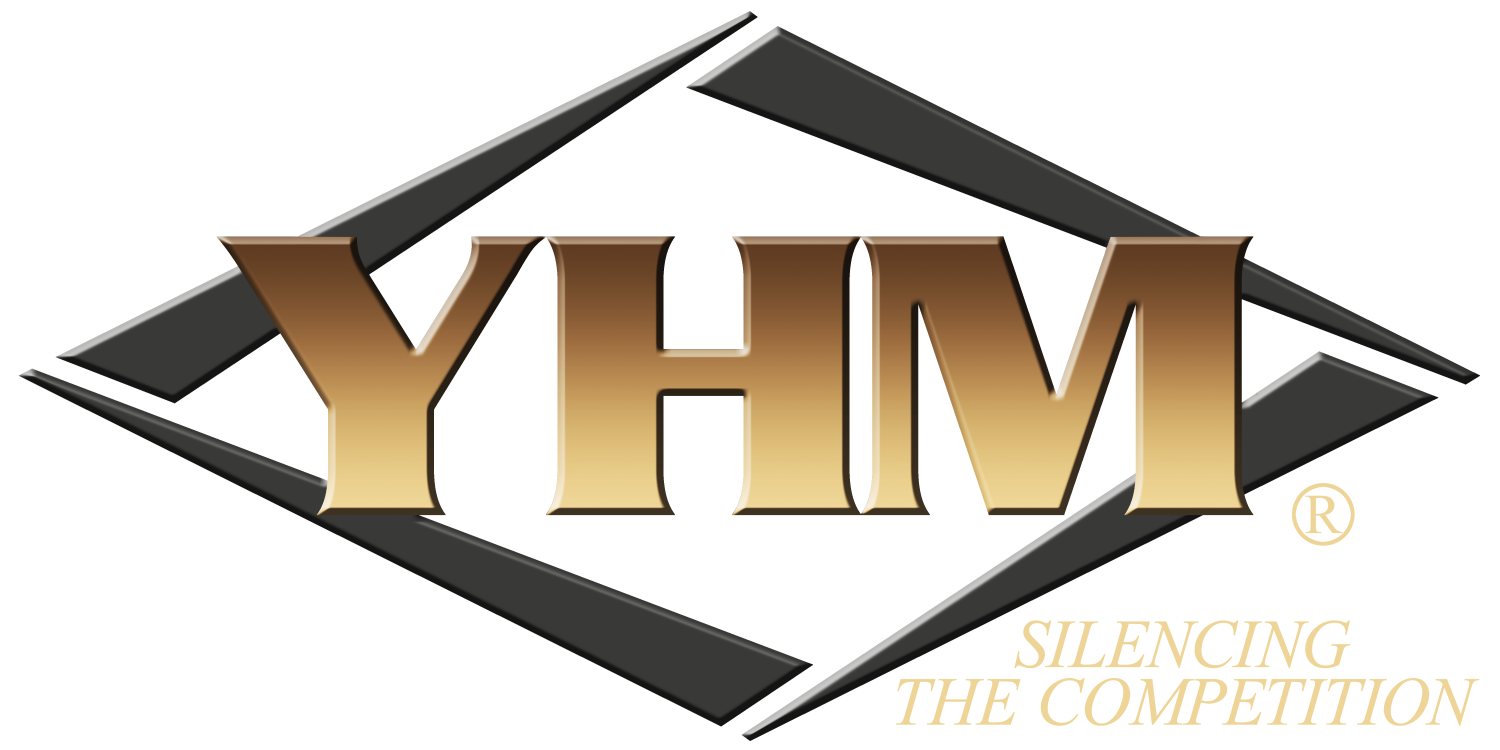Good afternoon everyone and welcome back to TFB’s Silencer Saturday brought to you by Yankee Hill Machine, manufacturers of the new YHM Turbo T3 5.56 rifle suppressor. Last week we walked through some of the aspects that make a solid Personal Defense Weapon (PDW). Today we look at the SilencerCo VELOS LBP, the West Valley City, Utah company’s latest model that focuses primarily on low back pressure while also featuring a very manageable weight and hard use capabilities to meet the demands of educated suppressor buyers. Let’s take a look at the first 3D printed release from a household name in suppressors.
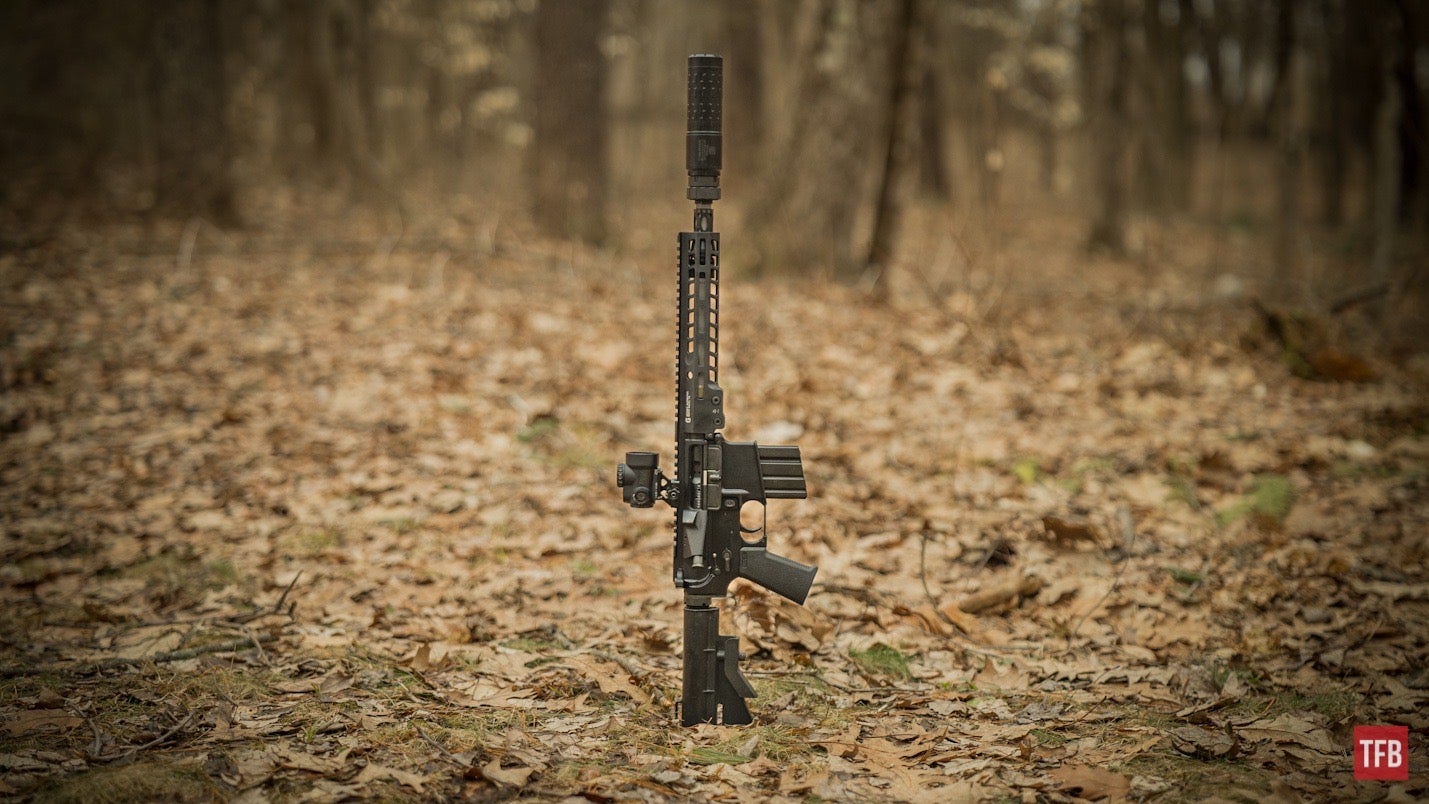

SILENCER SATURDAY #272: Under Pressure – SilencerCo VELOS LBP
More SilencerCo @ TFB:
SILENCER SATURDAY #272: Under Pressure – SilencerCo VELOS LBP
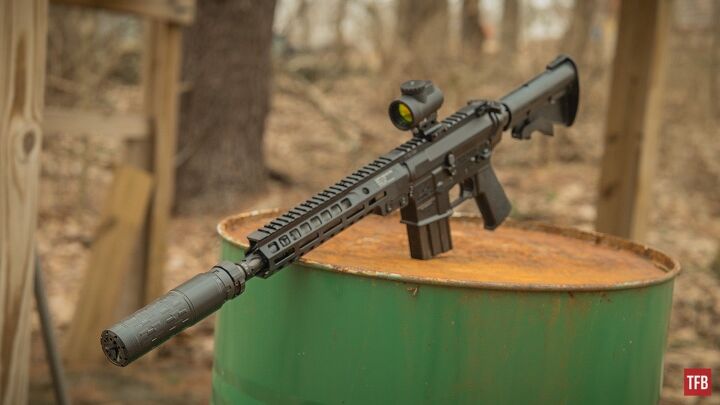

SILENCER SATURDAY #272: Under Pressure – SilencerCo VELOS LBP
In past editions of Silencer Saturday we have discussed at length both additive manufacturing and the need for low back pressure suppressors and gas regulation . I will reiterate my feelings that 3D printed firearms and parts is the future of the industry and will continue to be more common in the coming years. Current processes require forging, hammering, and cutting away metal to end up with a final product. On the contrary, additive manufacturing builds parts by laser sintering metal powder in successive fractional passes, in essence welding tiny particles together to form a final shape. The benefits are seen as unique geometries, like the internals of a suppressor, that would be nearly impossible to create by traditional methods. The current downsides are the time it takes to make a batch of parts and the massive amounts of uninterrupted energy required, which passes down to the consumer as higher costs.
Reduced back pressure suppressors are important in their own right – in the past, military testing of decibel readings focused on the muzzle of the firearm, neglecting to pay proper attention to the resulting pressure that is forced down the action in auto loading hosts which can force gasses and sound close to the shooter’s face. By designing pathways for the flow of gasses inside the suppressor, they can be redirected forward and out of the muzzle end instead of back down the barrel and/or in the gas system of the firearm.
Combining the unique geometries capable only with additive manufacturing and the redirection of gas flow to reduce internal pressure, SilencerCo has developed the VELOS LBP 5.56mm silencer. Let’s look at the numbers.
SilencerCo VELOS LBP – Specifications:
- MODEL: VELOS LBP
- SKU: SU5059
- MANUFACTURER’S PAGE: https://silencerco.com/silencers/velos-lbp
- CALIBER: .223 REM/5.56 NATO
- ACCESSORIES Charlie & ASR
- MSRP: $1,174
- WEIGHT: 15.2 oz
- LENGTH: 5.98″
- DIAMETER: 1.73″
- MATERIALS: 17–4 SS & Inconel 625
- MUZZLE AVERAGE: 5.56 NATO: 137.1 dB
- FINISH: Black V-Series Cerakote
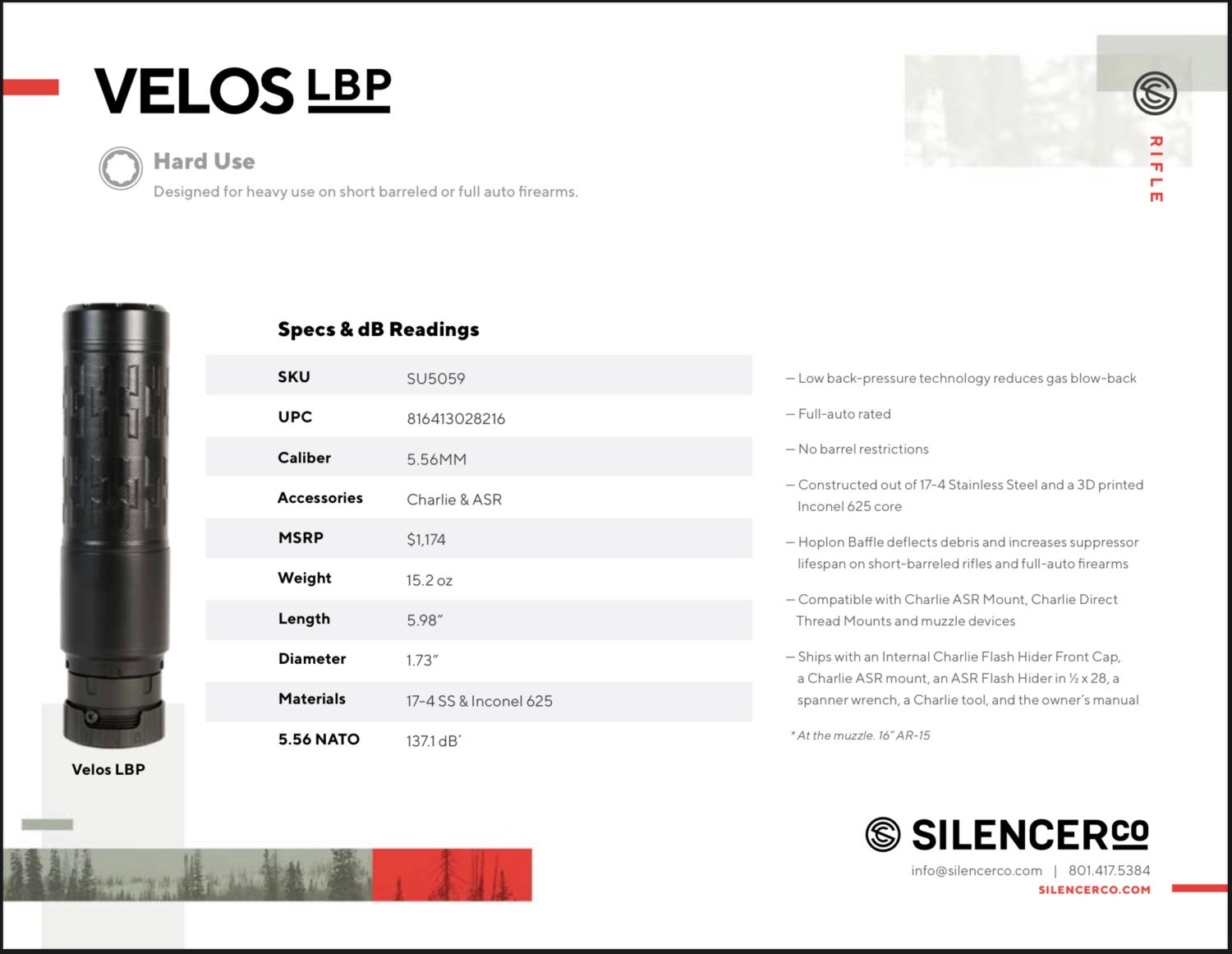

SILENCER SATURDAY #272: Under Pressure – SilencerCo VELOS LBP
Features:
- Low back-pressure technology reduces gas blow-back
- Full-auto rated
- No barrel restrictions
- Constructed out of 17-4 Stainless Steel and a 3D printed Inconel 625 core
- Hoplon Baffle deflects debris and increases suppressor lifespan on short-barreled rifles and full-auto firearms
- Compatible with Charlie ASR Mount, Charlie Direct Thread Mounts and muzzle devices
- Ships with an Internal Charlie Flash Hider Front Cap, a Charlie ASR mount, an ASR Flash Hider in 1⁄2 x 28, a spanner wrench, a Charlie tool, and the owner’s manual
The Charlie ASR mounting system screws on to the VELOS LBP and allows for the use of a host of different flash hiders and muzzle brakes from SilencerCo. The tradeoff here is weight, which is not unique to SilencerCo – most manufacturers QD systems can add on a few ounces.
Below, the Charlie AS system mounted on the VELOS LBP is about 19.3 ounces.
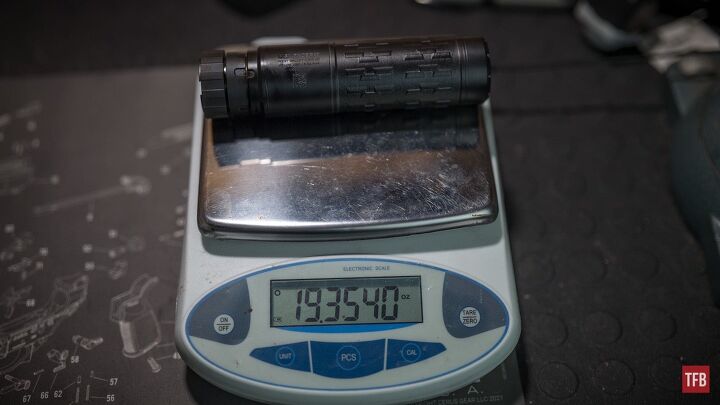

SILENCER SATURDAY #272: Under Pressure – SilencerCo VELOS LBP
Without the Chariie ASR QD system, the naked VELOS LBP weighs in at about 15.4 ounces.
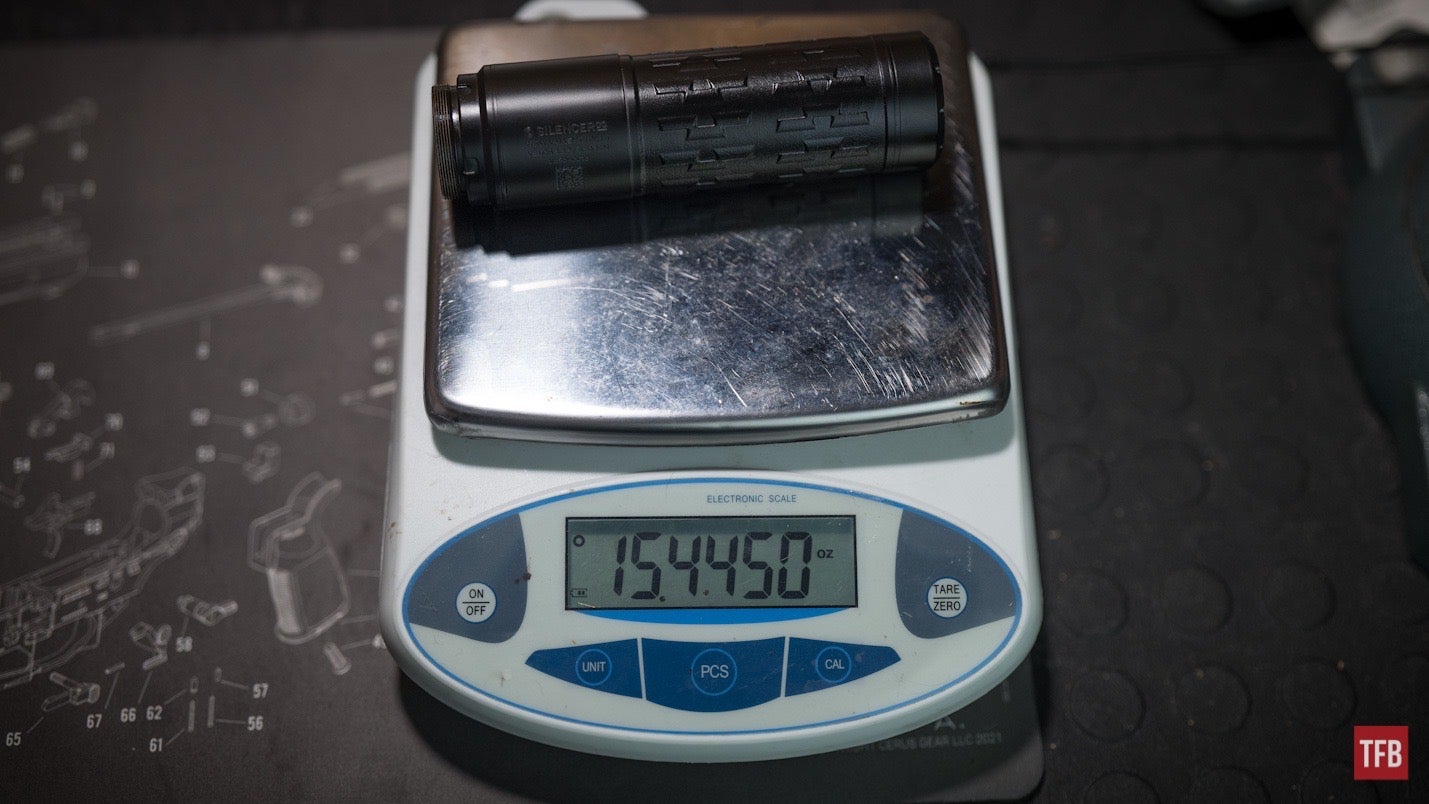

SILENCER SATURDAY #272: Under Pressure – SilencerCo VELOS LBP
I do like the ASR system. It is a simple right handed thread with a 1/8th turn of an external locking ring to keep it in place. It does add a bit of weight and length, so if you are looking for the shortest and lightest combination possible, my suggestion is to use the SilencerCo Charlie direct thread mount.
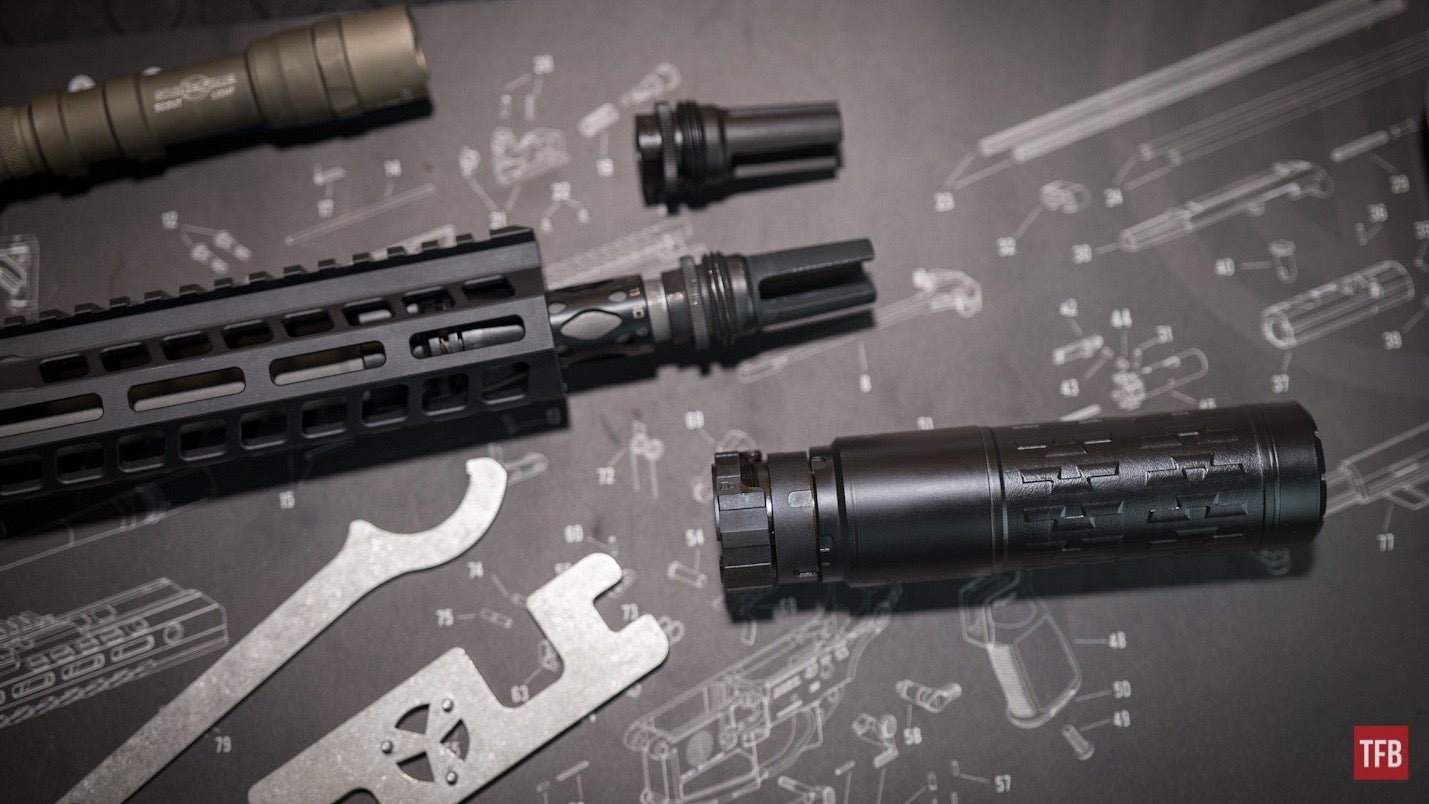

SILENCER SATURDAY #272: Under Pressure – SilencerCo VELOS LBP
This test host is outfitted with a RIFLESPEED 12-posiiton adjustable gas block. We’ll discuss that in a moment.
Looking from the top down, you can see the nine gas ports on the leading edge of the VELOS LBP that are designed to redirect gasses and pressure out of the front of the suppressor. with the end cap removed, the bore of the last baffle can be seen that has a relief cut or “mouse hole” with helps with sound reduction efficiency.
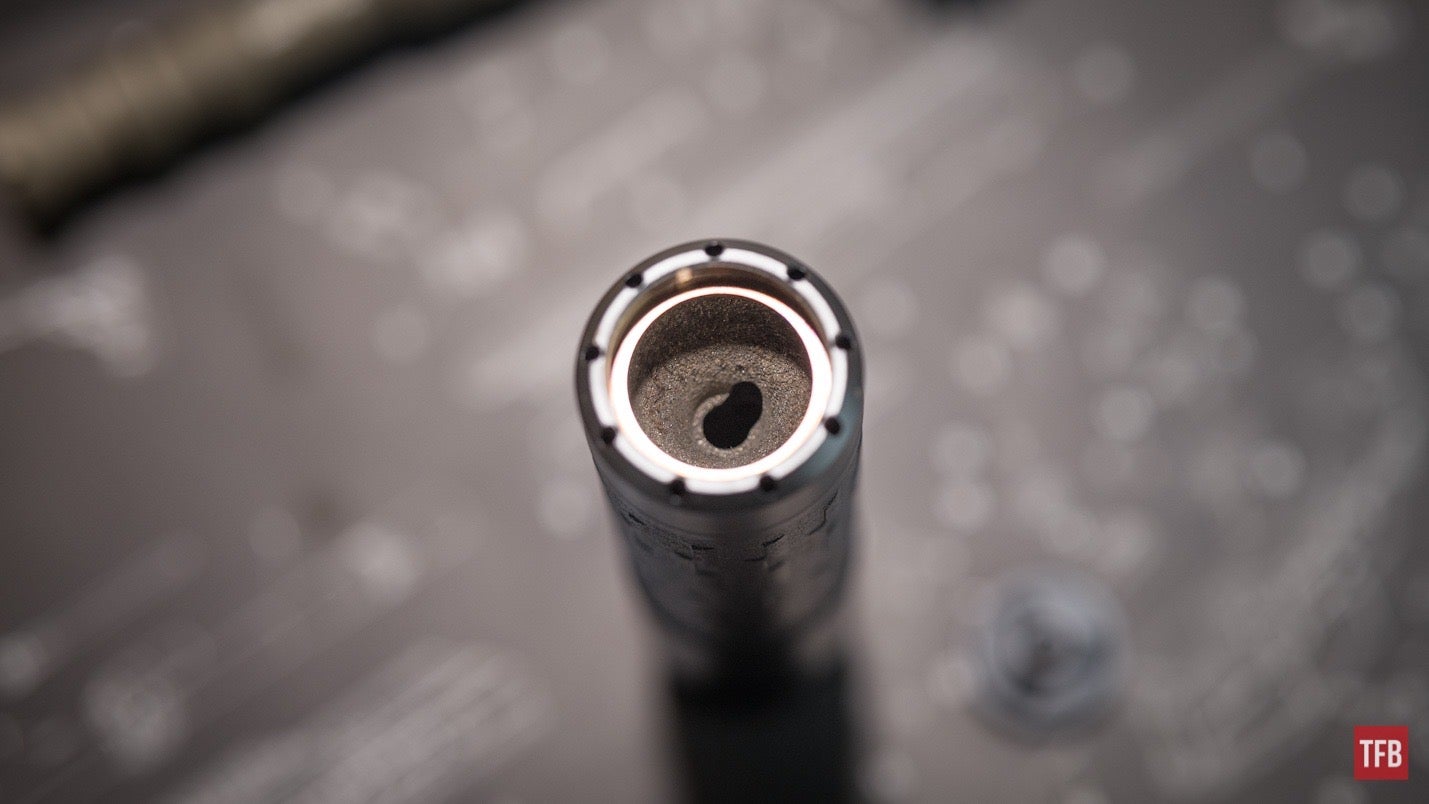

SILENCER SATURDAY #272: Under Pressure – SilencerCo VELOS LBP
Looking from the other direction, the blast baffle is an inverted or depressed cone with no relief cut. My theory is that this blast baffle shape helps to redirect the gasses into a series of small chambers that end at the nine exit holes in the front which gives the VELOS LBP its low back pressure qualities.
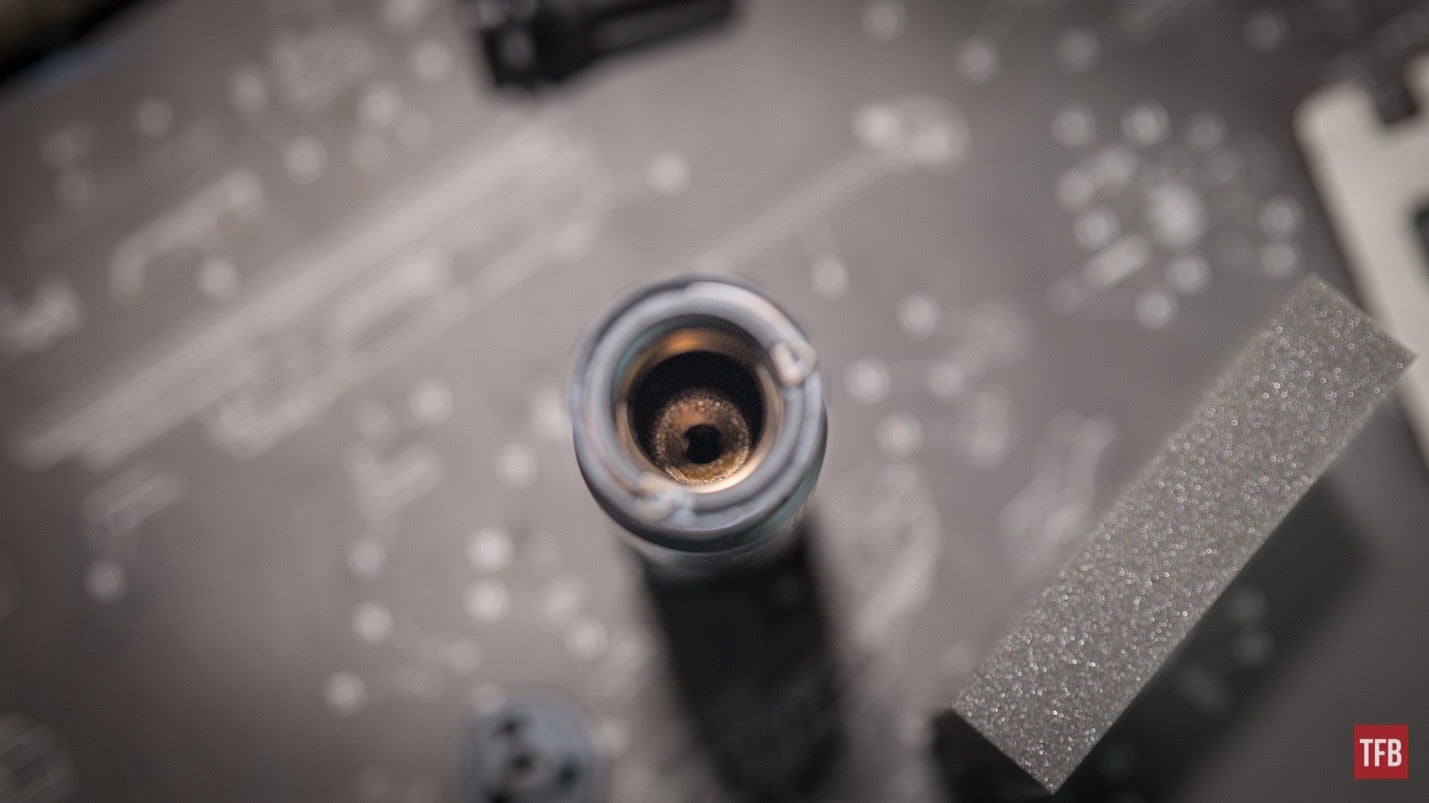

SILENCER SATURDAY #272: Under Pressure – SilencerCo VELOS LBP
Shooting the VELOS LBP
I installed the RIFLESPEED gas blocks at the begining of the year on two different uppers – 5.56mm and 300BLK – as testing platforms for rifle suppressors that come through the Silencer Saturday queue. Because the RIFLESPEED gas blocks offer 12 positions, the theory is that we can compare the back pressure levels for new silencers to a bare muzzle or to other non pressure reducing suppressors. I need to find a calculation that will estimate how much gas if flowing through the gas port with each click of the dial. For that I need someone who is great at geometry – the RIFLESPEED plunger is rounded and moves across the top of the gas port to open (let more gas into the system) or close (reducing the gas in the system).
The VELOS LBP did not require a gas adjustment when compared with shooting this host with just using the flash hider. Ejection remained at the four o’clock position either suppressed or unsuppressed and the action continued to cycle perfectly, locking the bolt back after firing the last round in magazine, I also didn’t notice any gas or particulates coming from the ejection port.
The VELOS LBP does sound very good. While it is difficult to evaluate centerfire rifle suppressors with supersonic ammunition, there is a satisfying sound I look for when I shoot one round without protection in my left ear (don’t try this at home). I equate it to being able to hear the supersonic crack of the bullet over any of the remaining muzzle blast exiting the suppressor.
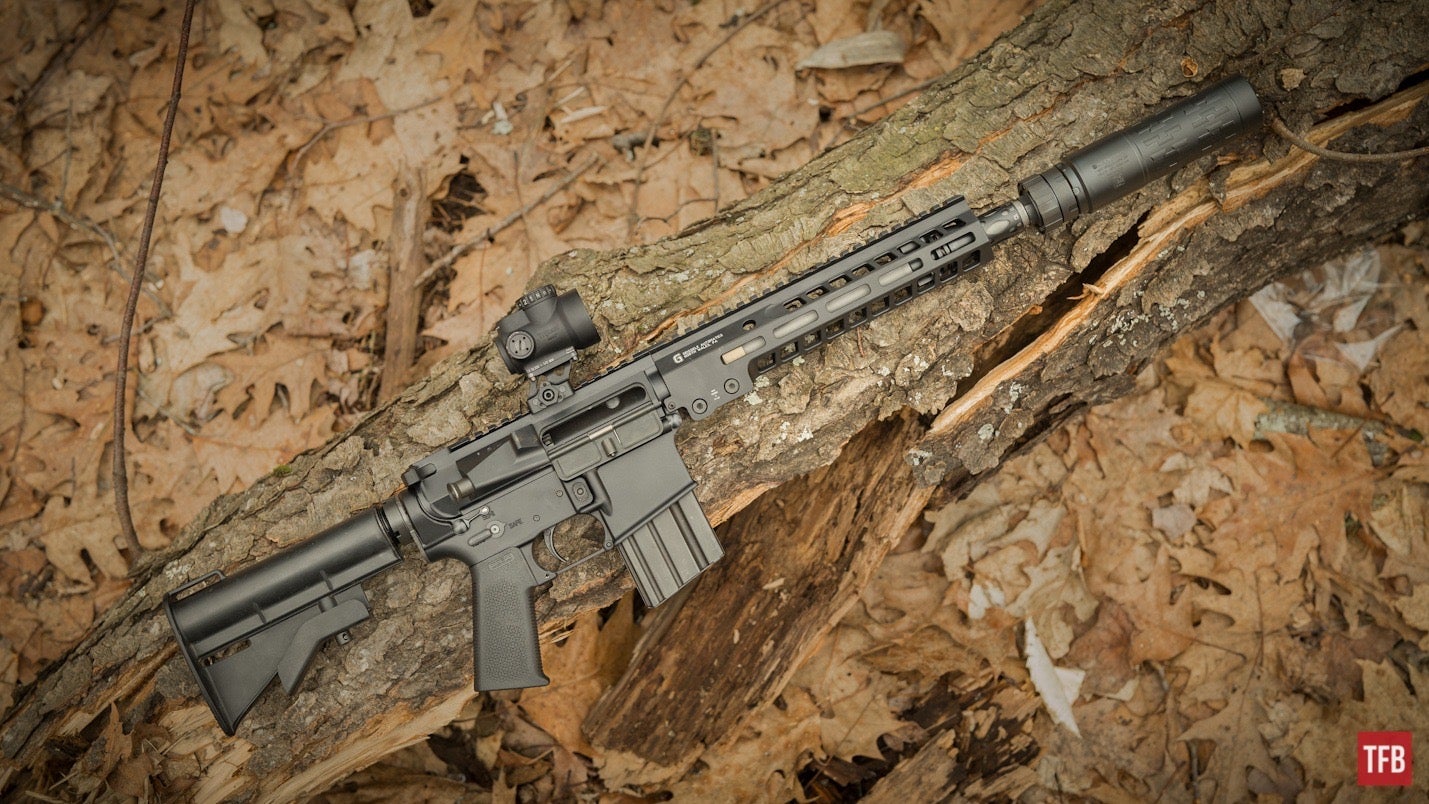

SILENCER SATURDAY #272: Under Pressure – SilencerCo VELOS LBP
While it will never be “quiet” because no centerfire rifle can be truly tamed, the VELOS LBP has solid performance. However, it’s main selling point is the reduction of back pressure, which it appears to handle with ease. And it is all due to engineering and the use of additive manufacturing. Next week we will stick it on the end of the FN 249S and test its hard use capabilities under sustained rates of fire.
Thanks for reading. Be safe, have fun, and we’ll see you back here next weekend for another Silencer Saturday.


